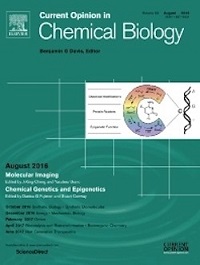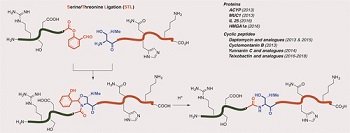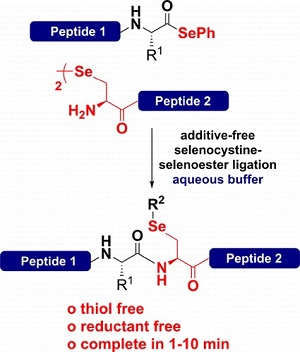Over the last 20 years, amide-bond forming ligation reactions have established themselves as an essential tool for the total chemical synthesis of peptides and proteins. This spectacular development is echoed in an abundant literature.
The selection of books, reviews and papers below is a good start for introducing the main concepts of peptide ligation to those people who want to know more about these reactions.
- Native Chemical Ligation and Extended Methods: Mechanisms, Catalysis, Scope, and Limitations
Vangelis Agouridas, Ouafâa El Mahdi, Vincent Diemer, Marine Cargoët, Jean-Christophe M. Monbaliu*, and Oleg Melnyk*
Chem. Rev. 2019, 10.1021/acs.chemrev.8b00712

- Rapid and efficient protein synthesis through expansion of the native chemical ligation concept
Sameer S. Kulkarni, Jessica Sayers, Bhavesh Premdjee & Richard J. Payne
Nature Reviews Chemistry 2018, 2, 0122
DOI: 10.1038/s41570-018-0122
- Protein Ligation and Total Synthesis volume I and II
Liu, L. (Ed.),
Ed. Springer International Publishing: Switzerland, 2015; Vol. 362-363.
DOI: 10.1007/978-3-319-19186-7
- Special issue in Current opinion in chemical Biology
Curr. Opin. Chem. Biol. 2014, 22, 1-162
Synthetic biomolecules, edited by Stephen BH Kent and Paul F Alewood

- KAHA LIGATION Chemical Protein Synthesis with the α-Ketoacid–Hydroxylamine Ligation
Jeffrey W. Bode. Acc. Chem. Res. 2017, 50, 2104–2115.
DOI: 10.1021/acs.accounts.7b00277
- STL LIGATION Serine/Threonine Ligation: Origin, Mechanistic Aspects, and Applications
Han Liu and Xuechen Li. Acc. Chem. Res. 2018, 51, 1643–1655.
DOI: 10.1021/acs.accounts.8b00151

- DSL LIGATION Rapid Additive-Free Selenocystine–Selenoester Peptide Ligation
Nicholas J. Mitchell, Lara R. Malins, Xuyu Liu, Robert E. Thompson, Bun Chan, Leo Radom, and Richard J. Payne. J. Am. Chem. Soc. 2015, 137, 14011–14014.
DOI: 10.1021/jacs.5b07237

 The Protein Chemical Synthesis Database
The Protein Chemical Synthesis Database